Annals of Limnology and Oceanography
Source Levels of an Acoustic Harassment Device System on an Operational Scottish Salmonid Farm
Victoria LG Todd1,2, Yang Yang1, Mario M Rollo Jr1, William L Wu1,2 and Ian B Todd1
1Ocean Science Consulting, Spott Road, Dunbar, East Lothian, Scotland, EH42 1RR, UK
2Institute of Sound and Vibration Research, University of Southampton, Southampton, SO17 1BJ, UK
Cite this as
LG Todd V, Yang Y, Rollo Jr MM, WL Wu, Todd IB. Source Levels of an Acoustic Harassment Device System on an Operational Scottish Salmonid Farm. Ann Limnol Oceanogr. 2025;10(1):007-020. Available from: 10.17352/alo.000019Copyright
© 2025 LG Todd V, et al. This is an open-access article distributed under the terms of the Creative Commons Attribution License, which permits unrestricted use, distribution, and reproduction in any medium, provided the original author and source are credited.Acoustic Harassment Devices (AHDs) are used worldwide to deter pinnipeds from predating fish-aquaculture facilities; however, effects on non-target species are of concern. This study focused on the newly developed, Research & Development (R&D) OTAQ Aquaculture SealFence AHD system, tested at a fully operational salmonid farm in Scotland, located within a Special Area of Conservation. The primary aim was to estimate the Source Levels (SLs) of the R&D AHD system in real field conditions and assess its signal propagation. Field measurements revealed that AHD signals were detectable up to 4.2 km. The estimated SLs ranged from 123.14 to 134.52 dB re 1μPa RMS @ 1 m. High variation in SPLs was observed at close distances from the AHD, likely due to signal directionality, reflections from fish cages and farm structures, and multipath interference from the water surface and seabed. These processes can produce constructive and destructive interference, resulting in pronounced variability in the measured AHD signal at short ranges. Background noise measurements suggest that introduction of anthropogenic noise into the marine environment, combined with other sources, should always be considered. This study provides valuable empirical data on the acoustic output of a new AHD system, highlighting its potential to minimise noise pollution compared to existing devices; however, further research is needed to evaluate its efficacy in deterring seals and its impact on non-target species.
Abbreviations
AC: Alternating Current; ACM: Active Conditioning Monitoring; AcTUP: Acoustic Toolbox User Interface; ADD: Acoustic Deterrent Device; AHD: Acoustic Harassment Device; AIS: Acoustic Identification System; AMD: Acoustic Mitigation Device; ANSI: American National Standards Institute; BNC: Bayonet Neil-Concel man; C: Celsius; ca.: Circa; cm: Centimetre; CTD: Conductivity, Temperature, Depth; DAQ: Data Acquisition Card; dB: deciBel; DC: Direct Current; e.g.: Exempli gratia; et al.: Et alia; etc.: Et cetera; EOD: Explosive Ordnance Disposal; EU: European Union; GPS: Global Positioning System; Hz: Hertz; i.e.: Id est; kHz: kiloHertz; km: Kilometre; JNCC: Joint Nature Conservation Committee; LOA: Length Over All; m: Metre; M: Motor Vessel; ms: Microsecond; NASA: National Aeronautics and Space Administration; NDA: Non-Disclosure Agreement; NE: North-Easterly; NetCDE: Network Common Data Form; nm: Nanometre; OSCAR: Ocean Surface Current Analysis Real-time; p: Pressure (unit); PE: Parabolic Equation; pk: Peak; p-p: Peak-to-peak; PSD: Power Spectral Density; PSU: Practical Salinity Units; RAM: Range-dependent Acoustic Model; R&D: Research & Development; re 1μPa: Reference to 1 micro Pascal; RL: Received Level; RMS: Root Mean Squared; s: Second/s; SAC: Special Area of Conservation; SD: Standard Deviation; SE: South-Easterly; SEL: Sound Exposure Level; SL: Source Level; SNPP: Suomi-National Polar-orbiting Partnership; SPL: Sound Pressure Level; SST: Sea Surface Temperature; TL: Transmission Loss; UK: United Kingdom; USB: Universal Serial Bus; VIIRS: Visible Infrared Imaging Radiometer Suite; WGS: World Geodetic System
1. Introduction
Impacts of common (Phoca vitulina) and grey (Halichoerus grypus) seal on aquaculture facilities in the United Kingdom (UK) are well documented [1-4], and include direct predation, fish injury, reduced fish-growth rates, fish-pen damage, loss of fish stocks, and two-way genetic contamination/disease-transmission between wild and farmed fish stocks [5]. Effects are costly to industry, so considerable effort has been placed by fish-farm operators and engineering firms into reducing likelihood of interactions. One method of achieving this, is development of devices that emit sound to deter seals from approaching aquaculture pens, often with mixed success [4,6-8].
Acoustic Harassment Devices (AHDs), Acoustic Deterrent Devices (ADDs), Acoustic Mitigation Devices (AMDs), or more colloquially termed ‘seal scarers’ or ‘pingers’, are instruments that emit loud and often aversive noise into the marine environment. These are intended to harass/deter target marine mammals from approaching fisheries, aquaculture facilities, and offshore anthropogenic noise-producing activities including, inter alia, pile-driving for wind farm and bridge/harbour construction, conductor driving for hydrocarbon-exploration drilling, Explosive Ordnance Disposal (EOD), etc. Most AHDs are assumed to cause discomfort by producing intense (≥170 dB re 1 μPa Root Mean Squared, RMS @ 1 m) low-to-mid frequency (1–30 kHz) noise [9,10]; however, while pinnipeds have underwater hearing ranges of ca. 50 Hz–86 kHz [11], some models of AHD have been designed by manufacturers with limited or no prior research into their estimated/measured Source Levels (SLs), or understanding of hearing capabilities of target (or non-target) species. This is becoming more of an issue in the finfish aquaculture industry, where AHDs are used currently on approximately half of Scottish salmonid farms and usage is rising [8,12].
One of the reasons why AHDs are considered acceptable marine-mammal mitigation technique on fish farms, is that historically, they have been easy to introduce legislatively and are designed to keep seals away; AHDs are complementary to alternate physical-mitigation methods, such as stainless-steel cages, which are used to prevent entry into the pen. Moreover, their noise is unlikely to cause injury to Atlantic salmon (Salmo salar), with poor detection above 150 Hz [13], although the preference is to now see fish hearing as a spectrum ranging from fish that are only sensitive to particle motion (e.g. sharks and rays), to fish that have adaptations (Weberian ossicles) that allow them to detect acoustic pressure (e.g. ostariophysians like carp and catfish). Underwater noise pollution, however, is now a legislative major cause of concern, and there is potential for AHDs to introduce loud noise to large swathes of coastal habitat, especially in Scotland [14,15], which may represent a significant, yet often overlooked, source of displacement for non-target marine mammals [16], especially odontocetes such as harbour porpoise, Phocoena phocoena [15,17-25], bottlenose dolphin, Tursiops truncatus [26], and killer whale, Orcinus orca [16,27]. This is especially critical in Scotland, because most west coast salmonid aquaculture facilities are located in the Inner Hebrides & Minches Special Area of Conservation (SAC), designated under the European Union Habitats Directive [28]. Indeed, in late 2021, Environmental Standards Scotland (ESS) raised concerns about Marine Scotland’s oversight of AHD use in aquaculture [29]. The issue centred on allegations that some fish farms were deploying ADDs without the required licences and questioned whether Marine Scotland was adequately investigating and enforcing compliance with the 1994 Regulations. Since then, Marine Scotland has shifted toward more active enforcement, including the rollout of an AHD Compliance Plan and on-site inspections beginning in early 2022. Additionally, a Scottish Government Aquaculture Code of Practice [30], was brought under the enforcement provisions of the Aquaculture and Fisheries (Scotland) Act 2007, strengthening the requirement for operators to either obtain an EPS licence or demonstrate that one is not needed. Consequently, there is extreme regulatory pressure on fish farms to minimise disturbance to European Protected Species (EPS) in the SAC. Fish-farm (e.g. Marine) licences are granted only if operators perform appropriate environmental assessments of potential impact on non-target species, such as porpoises. Moreover, since EPS located within 0 – 12 nm in the Scottish marine environment are protected under ‘The Conservation of Offshore Marine Habitats and Species Regulations 2017’ [31], new regulations came into effect in March 2021 that stipulate any works/activities (excluding scientific research) that could potentially affect EPS are granted only with a new licence application. Consequently, in response to ever changing regulations, there is increased R&D activity by many manufacturers to develop AHDs that can produce noise at lower levels than those on the market currently, to reduce unwanted side effects on non-target species at the same time, whilst maintaining efficacy at deterring seals.
AHD Source Levels (SLs) provided by manufacturers have been historically unreliable, predominantly because engineering-based calculations involving conversion from power to SL are not calibrated empirical measurements of SL [15]. While SL is independent of its immediate surroundings, it is important to understand that real-life-environmental factors must be accounted for in an appropriate propagation model, whilst understanding that these oceanographic influences do not affect the SL itself. Underwater-noise propagation, however, affects Received Level (RL) of noise transmitted by the source and propagation is determined both by the acoustic-power output of the source and, equally importantly, by local sound-transmission conditions [32]. Consequently, reported SLs derived from RLs of different types of AHD vary widely (Table 1) often with different measurement techniques (and thus results) for the same type of device in different field conditions, even on the same day of measurement. Accordingly, reported values are not transferrable to other geographical locations because AHD RLs are difficult to predict due to dynamic signal propagation in the complex and range-dependent underwater environment. Acoustic output can also vary with source depth, due to surface interactions, fish-farm site configuration, fouling on the transducer and/or lower battery voltages [9]
Extreme caution must be applied when comparing values reported in Table 1, as comparing units from different studies is unwise. For example, some authors/manufacturers report SEL, not SPL, and it serves no purpose to compare pressure with energy. The various noise sources also differ, in that some studies report peak values for an impulsive source, which is not comparable, for example, with continuous signals. Additionally, empirically derived field measurements of SL and frequency spectra, which exist for some devices [10,14,33-36], introduce, inter alia, variations in geography, oceanography, source-operating status, source number online, input-power levels, directionality, and calibration status into results. Moreover, manufacturers’ specification sheets can be subject to change, often without accompanying explanations as to whether reported values have altered because of newly developed ADD models (i.e. further R&D), new empirical measurements of existing models, or simple ‘rebranding’ of existing models, as is often the case in industry in general. A better approach would be to classify AHDs into ‘groups’, or ‘types’ listing the various makes for comprehensiveness only. Nonetheless, as can be seen from Table 1, there is quite a range in reported values between devices. For a wider review of available AHDs, see McGarry, De Silva [10] and Todd, Williamson [15].
The aim of this study was to address the real-world problem of loud AHDs used in aquaculture [15], which can have detrimental effects on non-target species such as Eurasian otter, Lutra lutra [37], and in particular, harbour porpoise. Specifically, this study focused on estimating the field Source Levels (SLs) of a newly developed, R&D version of the OTAQ Aquaculture SealFence AHD system, designed to be as quiet as possible while still effectively deterring seals. The study also aimed to assess the signal propagation of this AHD in real field conditions on an operational fish farm in Scotland. Due to the short time frame (two days) of these trials, it was not possible to test other models or manufacturers of AHDs, or to perform tests on the efficacy of the device in deterring seals or its incidental effects on non-target species. Consequently, the acoustic assessment comprised three interrelated components: (1) SL estimation in real field conditions, (2) noise propagation/Transmission Loss (TL), and (3) Received Levels (RL) of radiated acoustic energy from the AHD system, with an introduction of concepts and justifications for the adopted methods and analysis.
2. Materials & methods
The operational fish farm was located in a narrow (< 5 km) channel off the Isle of Skye on the west coast of Scotland, UK. The site comprised 10 x 38-m circular diameter cages moored in one group of 5 x 2 cages. Surface area for each cage was 1,146 m2. Grid spacing was 80 m x 80 m, running in a south-west to north-east direction, connected by 14 buoys. At the time of trials, the farm was stocked with Atlantic salmon smolts (ca. 30 cm in length).
2.1. Timing & transect locations
Field measurements took place on 19th and 20th April 2019; protocols were based on previous AHD noise-measurement trials on another west coast Scottish fish farm developed by the inter-connected studies of Todd, Jiang [14], Lepper, Turner [33]. The short (two-day) opportunistic time window was constrained operationally by the fish-farm provider, such that these dates were the only ones available to perform empirical-noise recordings of the R&D system that year.
All measurements took place from a 10-m Length Over All (LOA) Motor Vessel (MV) used to service and effect crew transfers to and from the fish farm. Two measurement transects were performed over two consecutive days. The south-easterly (SE) transect ran across the width of the channel and the north-easterly (NE) transect ran towards the open sea (Figure 1). Each transect commenced 2–7 m away from one of the outermost AHD units to various far-field positions at 500 m, 1,000 m, and at 500 m intervals linearly to a maximum distance of 4,200 m which was effective channel width before landfall on the SE transect (and for consistency, the end point of the NE transect).
2.2. AHD description
The primary sound source comprised a 16-unit system of a newly developed R&D ‘patrol mode’ version of the OTAQ Aquaculture SealFence AHD system, a single unit of which is displayed in Figure 2. Patrol mode refers to a lower assumed Source Level (SL) output mode of the AHD, ranging typically between 125-170 dB re 1μPa RMS. This mode is designed to emit signals at a lower intensity compared to the standard mode, which helps in reducing the potential impact on marine mammals while still being effective at deterring seals. At the time of these trials, estimated SL and directionality of each of the units was unknown, the deterrent was still under development, and had not been tested previously in calibrated tank or field conditions; however, in a bid by the manufacturer to lower potential audibility to non-target species on a fish farm site (that was particularly sensitive to harbour porpoise), the manufacturer’s engineers anticipated a much lower SL than any other of their previous AHD versions; for the latest versions of OTAQ Aquaculture AHDs, see https://offshore.otaq.com/products/sealfence-portable/.
Each of the individual unit’s transmission details of on trial days is presented in Table 2. Note, the prime object of this initial 2-day study was to make an informed assessment of the systems’ SPL in real field conditions on an operational fish farm. These field trials made no characterisation of any other type of AHD model, or any efficacy on seal or non-target species deterrence, which require long-term (>2 day) controlled and replicated experiments.
The unit comprised a 24 V Direct Current (DC) power input. The system was regulated through an Active Conditioning Monitoring (ACM) control unit installed on a central feed barge. There were 16 OTAQ Aquaculture SealFence units on the fish farm (Figure 3), but only a single AHD transmitted at any one time every 10 seconds, with the 16 devices firing in a random order; transmission details were identical for each unit. Signal duration was 2 s, comprising 2 ms short pulses, followed by 45 ms pauses between pulses with a 10 s gap between signals.
AHD projectors were located around the perimeter of the cage groups, as illustrated in Figure 3. No inference is made on any acoustic-shadow zones, since RL was measured from only one (of 16) transducer operating randomly at any one time.
2.3. Noise-measurement equipment
All noise-measurement systems and protocols met recommendations set out in the guidelines NPL [38] Noise-recorder system specifications, configuration, and noise-sampling rate are listed in Table 3.
Hydrophone sensitivities and transfer-function calibrations was provided originally by Reson Teledyne, then recalibrated prior to trials at facilities operated by Neptune Sonar (www.neptune-sonar.co.uk). Amplifiers and filters were sourced from Reson Teledyne to ensure system compatibility, which is an integral aspect of calibration.
2.4. Oceanographic measurements
To inform later the interpretation of noise propagation, empirical water column and seabed measurements were performed. Sampling stations were planned initially from deriving water depths from charts using Nobeltec TimeZero Odyssey version 2.1.3.3. ground-truthed to empirical measurements taken with a depth sounder (Depthtrax 2BX, Hawkeye Electronics, Florida). Beaufort sea state ranged between 1–4 on the SE transect (Table 4) and 0.5–2 on the NE transect (Table 5). At various intervals along transects, replicate Van Veen grab (0.045 m2) samples were performed to assess seabed type rudimentarily. Additional seabed structure was sourced from georeferenced images of seabed bathymetry provided by the fish farm. Only seabed surface sediment data are necessary for modelling AHD frequencies of operation, since sediment penetration at these wavelengths is limited, and does not contribute to down-range re-emergence into the water column. Consequently, in addition to grab samples and data provided by the fish farm, seabed data from the Joint Nature Conservation Committee (JNCC) UKSeaMap model were sourced [39]. Sediment data are useful for Parabolic Equation (PE) model used in this study (see 2.8), as it considers the seabed as elastic layers.
At each noise-measurement station, six replicate Conductivity, Temperature, Depth (CTD) profiles (SBE 49 FastCAT, Seabird Scientific, Bellevue, WA) at a sampling rate of 2 Hz were performed (Tables 4,5).). In addition to empirical CTD measurements, daily Sea Surface Temperature (SST) were sourced from the Visible Infrared Imaging Radiometer Suite (VIIRS), one of the key instruments aboard the Suomi-National Polar-orbiting Partnership (SNPP) satellite, accessed through the National Aeronautics and Space Administration (NASA) Ocean Colour Web portal (https://go.nasa.gov/2A3mQB1). Historical monthly data for the region from the previous three-years were collated at a resolution of 4 km and saved in Network Common Data Form (NetCDF) format. VIIRS data for the region were not always complete due to cloud cover. Additionally, due to proximity to land, the fish farm’s exact location did not fall within a satellite-measurement cell; consequently, measurements were taken from the nearest cell to the fish farm, at a distance of 4 km. Average Sea Surface Temperatures (SSTs) were also sourced from www.seatemperature.org.
Two ocean current data sources were reviewed and found unsuitable for this project due to low resolution. Firstly, Nobeltec TimeZero Odyssey showed that the nearest available current data was situated on the far eastern side of the channel. Secondly, data from NASA’s Ocean Surface Current Analysis Real-time (OSCAR) satellite only had a resolution of ⅓ of a degree in each direction, which in longitude is ca. 20 nm (37.04 km). Beaufort sea state was derived from mean wind speed but also estimated visually using the Beaufort scale [40]. The nearest meteorological mast was Skye Lusa, ca. 24 km away (WGS 84’ 57˚ 15.42’N, 5˚ 48.24’W).
2.5. Noise measurements
To minimise interference from other potential sound sources other than the AHD under investigation, an attempt was made to make measurements in the following conditions: (i) absence of other vessels, verified by both visual monitoring in the channel, and with use of real-time Acoustic Identification System (AIS) data from www.marinetraffic.com within a 5-km buffer; (ii) absence of any other anthropogenic sources in the frequency (10 kHz) of interest, and (iii) minimal violation of nominal environmental conditions required by ANSI and ISO such as excessive wave height and wind speed (>10.28 ms-1) as per ANSI/ASA [41] and ISO [42].
As per Todd, Jiang [14], Lepper, Turner [33], the AHD was operated from the pontoon by a qualified and experienced Technician, who maintained close radio and mobile phone contact with the two field Acoustic Technicians on the noise-measurement vessel. This ensured that accurate start and end times of AHD transmission were entered into a spreadsheet, which was cross-referenced with a spreadsheet maintained by Acoustic field Technicians.
The hydrophone was deployed at half water depth for each location, as recommended by NPL [38]. Estimated bending angles of hydrophone cables did not exceed 5° during transects, and as such, measurement position drifts were considered [41] negligible. Vessel traffic in the region was intermittent (vessels under 300 gross tonnage are not obliged to carry AIS), but since any external noise sources could potentially elevate the noise floor, background noise measurements were made periodically throughout the study when the AHD was inactive, and with vessel engines/depth sounder isolated/off. Global Positioning System (GPS) fixes were taken at start and end of each ca. 5–6 min noise-recording session. Data were timestamped when saved automatically onto internal PC hard drives, then backed up manually onto 4 TB (Seagate, CA) external hard drives. Data were quality controlled in the field by two Acoustic Technicians and signal analysis and modelling were conducted ashore after field trials.
2.6. Data processing
Van Veen grab samples were inspected qualitatively for rough grade, colour, texture, smell and appearance as per Todd, et al. [14]. CTD mean ± Standard Deviation (SD) values were calculated for salinity in Practical Salinity Units (PSU) and temperature (˚C), and data converted to sound-speed profiles as per Mackenzie (1981). Calibration factors for noise-measurement system sensitivity were applied to all acoustic data, which were processed in the time and frequency domain using custom-written Python v3.9.21scripts. ⅓ octave analysis was applied at frequencies consistent with original and revised American National Standards Institute (ANSI) standard S1.6-[43,44]1984. Although an analogue band pass filter has been used during the measurements, a digital filter, 4nd order Butterworth, was applied to further remove any potential time variant and electrical Direct Current (DC) artefacts below 10 Hz. ⅓ octave analysis was applied to samples after DC levels had ‘stabilised’. Only anticipated noise sources associated with the AHD transmission at its prime operating frequency of 10 kHz within the ⅓ octave band were analysed, as these were considered the most representative of the AHD’s signals, thereby minimising the likelihood of bias or underestimation of SLs. While data selected only considered the most likely and representative AHD source, a broader discussion of potential noise generated during fish farm operation (such as pumps, compressors, other vessel traffic, etc.) is included, but is not presented in analysis.
2.7. Noise metrics
A variety of noise-level indicators were chosen appropriate to analysis of the tonal, non-impulsive (continuous) nature of the AHD source. The source was treated as ‘continuous’ as per treatment of OTAQ Aquaculture systems in the desk-based modelling study of Todd, Williamson [15] for comparability purposes. As per the calculation methods stated in NPL [38], Root-Mean-Square Sound Pressure Level (RMS SPL) was selected, as it used routinely for both hearing threshold and Received Level (RL). This metric is based on the RMS of pressure and was chosen over peak pressure (dB peak), which is more suitable for impulsive sources (with a finite duration), such as marine piling, and potentially some other makes of AHD. Normally, noise level can be calculated from the record when the device is on, and then the overall level during a longer time can then be estimated by considering the duty cycle and overall time period; however, this was not feasible due to the random firing pattern of AHDs, potentially with devices on opposite sides of the fish farm firing sequentially; therefore, distance to a noise-emitting source was unknown, which influenced ability to calculate noise level. This was less of an issue when using measurements from longer distances, as relative changes to distance between hydrophone and transducer were smaller. Consequently, RMS values were calculated over 40 s (the length of each record), and the data set were obtained for further analysis depending on the record quality.
SPL value is given in units of dB re 1 mPa, for the RMS of a pressure, p, as per NPL [38]. Power Spectral Density (PSD) is the measure of signal’s power content versus frequency, and was calculated as per Alessio [45]. Sound Exposure Level (SEL) is a measure of the pulse energy content and is calculated from a pulse pressure squared integral of the pulse in units of Pa2s, with the value units in [46] dB. This metric was selected to be in line with other underwater acoustics [46-48] researchers. SEL is also useful when considering the dose level of a receptor over time, e.g. 24 hours, which was used in this study.
2.8. Source level estimates
The Source Level (SL) of the AHD signal was estimated by accounting for the Transmission Loss (TL) and the Received Level (RL), defined as the SPLrms in the ⅓ octave band centred on 10 kHz, measured in the acoustic far field of the source (up to 4,200 m – approximately 50 m from landfall) along the SE and NE transects. TL can be represented as:
where N is a factor for attenuation due to geometric spreading, R is the range from the source, and α (in dB m-1) is a factor for absorption of sound in water Kastelein, Hoek [49]. High values of N and α related to rapid attenuation and limited area of environmental effect, and low values the [50] converse. While absorption is frequency dependent and negligible for low frequencies and short distances, under normal circumstances for a 10 kHz signal, an absorption of 0.8 – 1 dB per km could be assumed; however, for the few data points obtained in these trials, variability is higher than the expected effect of the absorption. Consequently, as specified by Nedwell, Langworthy [50] for ranges < 10 km, the linear attenuation term α was ignored. N should be 20 for spherical spreading and 10 for cylindrical spreading; however, in practice, the actual number is often between these two values.
The RLs, expressed as SPLrms in the ⅓ octave band centred on 10 kHz, are therefore related to the SL and TL as follows:
This formula is used here to estimate SL and TL by obtaining the best linear regression fit of all the measurement points based on the smallest value for the sum of R2 (e.g. n log(x). Data outliers, i.e. instances where the SPLrms was significantly lower than other measurements at the same distance, likely influenced by extraneous transmissions, were excluded from the regression by assessing the signal-to-noise ratio (SNR) of the AHD signal on spectrograms.
3. Results
Oceanographic measurements, SL and signal transmission emitted by an AHD in real field conditions are presented.
3.1. Oceanographic measurements
Mean ± SD recording duration was 06:32 ± 0.003 mm:ss. Beaufort sea states over the two days of measurement ranged from 1 to 4 (mean ± SD of 1.82 ± 1.150). Conditions were partially cloudy, with good visibility, and occasional rain/drizzle.
Depth across the channel varied from 41–114 m (mean ± SD = 85.68 ± 24.17 m). The bottom boundary comprised sand and clay, with an estimated speed of sound of 1,800 ms-1 [51]. There was a harmonic median sound speed, chm, of 1,483 ms-1. Sound speed near the sea surface and the seafloor was 1,584 ms-1, and the profile was generally downward refracting except for a subsurface isovelocity layer of 1,504 ms-1 between 0.15 m and 72.36 m depth.
Figure 4a shows that for the SE transect across the channel, at 7 m and 4,200 m (both were in close proximity to shorelines on opposite sides of the channel), there was a small halocline in the upper 5 m, with a very small decrease in salinity by 0.3–0.4 PSU. All other locations sampled were well mixed vertically, exhibiting less than a 0.1 PSU change from surface to seabed. Figure 4b shows that only a small thermocline change of 0.6 ˚C occurred in the upper 10 m at SE 7 m. Other locations experienced small fluctuations, with expected gradual temperature declines with depth. In situ mean ± SD temperature over the two days was 8.28 ± 0.110 ˚C which was 0.17 ˚C warmer than the April average historical SST temperature for the area of 8.12 ± 0.450 ˚C.
3.2. Background noise
Overall, in terms of boat traffic, the study unavoidably occurred over the Easter weekend in a popular tourist destination; therefore, the channel was relatively busy during the two days of noise measurements. Periodic loud vessel-engine noise masked recordings, such that it was necessary to interrupt some measurements. These vessels were detected acoustically long before they were seen at ranges of > 10 km. Occasional tourist vessels departed from a nearby town, to circuit the area, before returning to port. On one occasion, engine noise was detected from a well-maintained noisy fishing vessel, again >10 km away, even though the vessel was obscured visibly by a headland. Nothing was detected on the AIS.
It rained periodically over the 2 days of field trials, which impacted all background noise and AHD signal recordings unavoidably. As such, background noise and sea state conditions were not ideal for recordings. The spectrogram shown in Figure 5 was computed using an FFT window of 0.21 s with 50% overlap, resulting in a frequency resolution of ca. 4.7 Hz and a time resolution of ca. 0.1 s. It can be seen from Figure 5, measured at 2 m from the source on the SE transect (water depth 46 m), shows sporadic vertical bands that cover the a wide frequency band on the spectrogram with intensity levels ranging from 60 to 80 dB re 1 µPa2/Hz. . This trend is likely influenced by on/off rain or drizzle conditions, which are known to generate broadband noise, particularly in the lower frequency range (100 – 1,000 Hz).Of interest are some periodic noise components <1 kHz (which also appear in the PSD on Figures 6,7 with peak PSDs showed at frequencies from 50 Hz to 300 Hz ), which possibly origin from intermittent machinery operation, propeller blade rate harmonics, or other transient acoustic sources not directly tied to the primary shipping noise.
Figures 6,8 shows the background noise PSD taken 2 m from the source in the NE transect. The recording contains several features, including peaks throughout the frequency band from 50 to 300 Hz, with a maximum PSD of 82 dB re 1 µPa2/Hz, followed by a sharp drop of approximately 11 dB commencing around 300 Hz and continuing up to 8 kHz. Importantly, the background noise level at the targeted frequency band, i.e. 10 kHz, is lower than the AHD at most measurements (including measurements in SE transect, as shown in Figure 7).
3.3. AHD signal
Figures 8,9 show the spectrograms of the AHD signal recorded at different distances (spectrograms were truncated at 2 kHz to improve visibility of the AHD signal), with the signal observed at intervals of ca. every 10 s. On the NE transect, the signal is clearly visible with a high SNR up to approximately 1.5 km, beyond which the SNR decreases. On the SE transect, the signal remains visible on the spectrogram up to about 2.5 km with a good SNR. At 500 m on the NE transect, the background noise level is high, which is also evident in the PSD plot in Figure 6. Data with strong interference, such as that recorded at 250 m on the SE transect, were excluded from further analysis.
Figures 10,11 show the SPL at ⅓ octave bands along the two transects. Figure 10 illustrate variation of SPL across NE transect, measured at distances ranging from 2 m to 4200 m, alongside background noise levels. In general, the SPLrms exhibits a clear frequency-dependent trend, with the highest intensities observed between 8 kHz and 10 kHz, peaking around 103 dB re 1 µPa, which gradually diminishes with increasing distance. The background noise remains relatively stable across frequencies, ranging from 85 to 100 dB re 1 µPa, suggesting a consistent ambient acoustic environment. Notably, the SPL curves show a pronounced peak around at low frequencies with intensity decreasing at higher frequencies (above 10 kHz) rapidly due to attenuation in the water column. The observed reduction in SPL with distance aligns with the expected spherical spreading loss, modified by frequency-dependent absorption, though the persistence of elevated levels up to 1500 m indicates potential contributions from multipath propagation or reflective surfaces. In addition, lower frequency bands exhibit greater variability between measurements at different distances, suggesting a multipath effect, where constructive and destructive interference amplifies variability, particularly below 500 Hz.
Figure 11 shows a pattern similar to Figure 10, with the AHD signal prominent at 10 kHz and at closer distances compared to further distances. The SPLrms intensity reaches higher maximum values, up to 109 dB re 1 µPa. Greater variability between measurements at different distances was also observed in the low frequency band, particularly below 1 kHz, indicating more pronounced constructive and destructive interference, likely partially due to the higher number of measurements in the NE. Note that along both transects, the water depth at middle distances (500–2400 m) is approximately 110 m, whereas at further distances, where SE has more measurements, the water depth decreases to 50–70 m.
At both transects, increases in ⅓ octave band SPLs were clearly observed at the AHD’s operating frequency of 10 kHz, particularly along the SE transect. However, for the NE transect, the signal was less distinguishable, especially for data collected 500 m from the AHD, which exhibited high SPLs across the frequency band (up to 120 dB re 1 µPa) without a distinct peak at 10 kHz. This is consistent with Figure 9, which shows strong noise below 10 kHz, resulting in a low SNR for the AHD signal.
Figures 6,7 depict the PSD of AHD signal measured along the NE and SE transects, respectively, compared with background noise levels (shown in red). Both transects show a pronounced frequency-dependent pattern. At low frequencies (10 – 1,000 Hz), PSD values increase, reaching up to ca. 120 dB for NE and ca. 125 dB for SE at intermediate distances, indicating stronger low-frequency contributions in the ambient sound field. The background noise remains relatively stable across the frequency range, fluctuating between 70 and 80 dB, reflecting a consistent ambient acoustic environment during the measurement period. At higher frequencies, sharp peaks at 10 kHz are evident in both transects, corresponding to the AHD’s operating frequency. These peaks are more pronounced in the SE transect than in the NE transect, suggesting that the AHD signal was stronger or better detected along the SE path. In addition, measurements at intermediate and far distances exhibit greater variability at lower frequencies, likely resulting from constructive and destructive interference, multipath propagation, and variations in water depth along the transects, consistent with the findings in Figures 10,11 above.
Overall, PSDs still show small peaks at 10 kHz with distance out to 4,200 m (Figure 11). Levels obtained at the 10 kHz peak frequency were consistent within all these figures, except in some cases where signals were smaller (e.g. 500 m in NE transect), and closer to background noise. Most variations in the frequency domain were below 2 kHz, potentially due to myriad reasons including transmission interference, environmental effects, fish farm machinery (e.g. pumps, feeders); however, these variations did not affect results obtained at the AHD’s operating frequency of 10 kHz, which was consequently the signal used for further analysis moving forward.
3.4. Estimation of source level
Only the ⅓ octave band centred at 10 kHz signal (and not the entire frequency spectrum of the recordings) was used to estimate sound levels moving forward. There was an 11.38 dB re 1 µPa RMS difference in estimation of SL between the two different transects: for the NE transect, SL was estimated to be 123.14 dB re 1 µPa RMS at 1 m with a geometric spreading attenuation factor (N) of 8.12, while for the SE transect, SL was estimated to be 134.52 dB re 1 µPa RMS at 1 m with N estimated at 11.91. Using SL from these transects, Figure 12 shows how SPL decreases with distance from the source. The first nearfield measurement locations, 7 m for the SE transect and 2 m for the NE transect, were within or very close to the AHD source; the NE data at 2 m exhibited extremely low SPL levels deemed unrepresentative of the AHD, leading to their exclusion from the regression to achieve the highest R2 value through post-hoc analysis. In Figure 12, best-fit lines were plotted on a log scale, along with all empirical measurements, revealing a strong correlation (R2 = 0.8014 for NE and R2 = 0.6075 for SE) and indicating a decline in SPL with increasing distance, consistent with geometric spreading and attenuation effects. Notably, very high variation in the AHD signal was observed at close distances (ranged from 100-151 dB re 1 µPa), which decreased with increasing range.
4. Discussion
This study reports empirical noise level measurements of a newly developed R&D AHD collected from an operational salmon farm in the Isle of Skye.
4.1. Oceanographic measurements
In situ CTD empirical oceanographic measurements yielded useful information about the environmental parameters of this specific location to inform the model. CTD point measurements were conducted on trial days only (i.e. poor temporo-spatial resolution), but these data are the preferred method for environmental studies, as opposed to using satellite-derived data, which are coarser resolution.
Empirically-derived-CTD data improved the accuracy of models (PE approximation) and allowed investigation of finer-scale oceanographic fluctuations specific to the site. The weak haloclines evident at both sides of the channel close to landfall, are typical of such conditions, in that likely land freshwater runoff reduced salinity in the upper 10 m. Salinity levels recorded were slightly lower than the 35 PSU typical of the North Atlantic, which is the most saline of all the major oceans, and this could again have been attributed to elevated levels of rainfall/riverine runoff over preceding days or months, not untypical of the west coast of Scotland in this season. A true thermocline was not evident at all locations sampled, which was again to be expected for this season, as water columns are typically well mixed vertically because of more prevalent winter storms. Empirical temperature measurements were marginally higher than average historical SST. Excluding the fact that the latter is a satellite-derived near-surface measurement, this warming could be attributed to several local factors, such as elevated sunshine on the day of trials. Given the nature of such ephemeral point measurements, in conclusion little can be derived from this other than the data were useful in improving accuracy of the modelling in this study, and more workers should be encouraged to perform these measurements during AHD noise-measurement trials.
4.2. Background noise
The area was reasonably busy in terms of vessels during noise measurements, and weather conditions were not optimal. Background noise sometimes increased with increasing frequency, likely as a consequence of the unavoidable intermittent grades of rain that can elevate the noise floor [52,53].
Aberrant noise artefacts were apparent close to the source during background noise measurements, which at times represented high values. There is no clear indication of origin of these signals which could be to any number of external fish farm operational noise sources (feed barge, pumps, etc.), for which there were no records were available.
During background noise measurements, aberrant artefacts <1 kHz were apparent close to the source. There was no clear origin of these signals which could have arisen from wave slap on the pontoon, nearby surf noise, fish-feeding pumps, toilets, aerators, and compressors, personnel walking on pontoons, etc. Specifically, for a fish farm, there are likely to be long durations where machinery noise emitted through coupling with the pontoons is apparent. Consequently, these noises could have become the dominant radiating sources when the AHD was inactive. More specific monitoring of existing fish-farm actions, along with logs of activity in a bid to attribute noise sources to identifiable activities would have been very beneficial to be accounted for in signal analysis. Interestingly, any information on existing airborne noise-power levels might have been a useful means of assessing the noise field, since many standard machines’ power levels (Lwa) are available readily, as part of health and safety assessments. Such documentation was not available for this study. Of note was a noticeable component at ca. 35 kHz @ ca. 12 dB, which was present during the background noise measurements, and increased with range from the fish farm. This was unlikely to be attributable to fish farm noise, boat sonar, or natural noise sources, and its origin remains unidentified. This signal was also unlikely to be attributed to other fish farms, located 10 km to the south, and 14 km the north.
4.3. AHD signal
AHD signals were apparent clearly in noise measurements taken near the source (7 m). This signal was more difficult to identify at greater distances when plotted in spectrograms; however, the 10 kHz signal was still identifiable in graphs of ⅓ octave band SPLs, and even more clearly recognisable in a narrow-frequency band at all distances in PSD plots. Plots of PSD provide a higher resolution, in comparison to the ⅓ octave band, which shows a value over the band. Again, large transient spikes were apparent in the recordings. Surface and seabed reflections of noise can travel between a source and receiver by a multitude of paths, which can disperse the arrived signal temporally. Vertical temperature and pressure structure, and tide can all pay a role in multipath arrivals, rendering identification of direct paths challenging.
4.4. Estimation of source level
Based on in situ empirical measurements, SL was estimated to be 123.14–134.52 dB re 1μPa RMS @ 1m, which is the first time this R&D AHD model has been measured in field conditions. Differences in the two SLs measured could be attributable to oceanographical/bathymetrical features between transects on the two days of measurement, but also including directivity of the source, which was unknown. A good review of factors affecting estimations of SL is provided in Todd, Williamson [15], but there are several factors that affect these sorts of estimations, depending on which data were selected, and which analysis method was applied. Consequently, extreme caution must be applied to any SL estimations made in field conditions for the following reasons.
Firstly, absorption coefficients can have a significant impact on SL estimations. In this study, we applied a simplified approach using an attenuation factor (N) in conjunction with TL estimates via a best-fit curve. This was likely between 10 and 20 log10 (shallow and deep water), estimated as 8.12 or 11.91. This resulted attenuation factor was a result of including/excluding the near-range measurements (for reasons explained below). A signal of this frequency is expected generally to affect absorption by ca. 0.8–1 dB/km. Since N varies considerably depending on which data set was selected, if the near-field measurement had been accounted for, there could have been an increase in SL of ca. 20 dB. However, in this study, extra caution need to be made for including of these near-range measurements in the geometric-spreading calculations to calculate SL. Firstly, hypothetically for a 10 kHz single spherically radiating transducer of around 10 cm diameter, the nearfield is ca. 0.15 m, so measurement at 2 m could, at least in theory, be considered in the far-field; however in this case, the ‘unit’ comprised 16 transducers triggered in a random order, placed over a widespread area (10 x 38-m circular diameter cages moored in one group of 5 x 2 cages at a grid spacing 80 m x 80 m), so the first useable measurement location needed to be at least a distance longer than the scale of the system; videlicet, while nearest locations to the source were at 2 m and 7 m (i.e. close or within an acoustic near field of the AHD), although the AHD single unit dimensions were small and the frequency considered quite high, the frame mounting (arrangement) of the 16 AHD system was much larger than 2 m; therefore, the actual distance of the first location to the sound source would have been variable and unknown, depending on which AHD was firing. This ‘influence’ becomes much smaller when the distance is larger. The influence of this near-field variability decreases with distance, which explains the large variations observed at 7 m in the SE transect. At 2 m, consistently low signal levels were recorded, suggesting that these measurements were strongly affected by near-field effects and the array configuration. Consequently, data from 2 m were excluded from the SL estimation, while data from 7 m were retained as sufficiently reliable. In summary, estimating SL under field conditions is inherently prone to errors in complex, range-dependent environments. Nevertheless, these results highlight the need for further measurements of future AHD systems on operational fish farms to validate and refine SL estimates and provide a basis for comparison with the results presented here.
While extreme caution must be applied when contrasting SLs with those reported in the literature, inter alia, because of different units, calculation methods, and environmental conditions at the time, compared to other RMS SLs of AHD models listed in Table 1, this R&D AHD is considerably lower than other AHD models. While there were a few dB difference in SL calculations between the two trial days, further measurements in different conditions, would be unlikely to elevate this SL to even the lowest RMS SL values presented in Table 1. Consequently, even applying the extensive caveats mentioned above – and the caveats reviewed extensively in Todd, Williamson [15], this newly developed OTAQ Aquaculture R&D system produced low levels of noise compared to other models of commercially available AHDs, including levels for OTAQ Aquaculture systems reported in Todd, Williamson [15].
The two-day study was intended originally to address a fish farm permit condition to maintain noise at levels that would cause minimum potential disturbance to harbour porpoise within the SAC, and it presents a rare opportunity to publish initial findings; therefore, unusually, this study was made with consent of both the fish farm and AHD operator, which is especially uncommon for trials involving testing of newly developed R&D proprietary technologies. To the best of our knowledge, only four fish-farm collaborative studies measuring AHD noise have been performed in a similar way to this work, two of which involved authors in this paper [14,33]. Other workers neglect to state if AHD recordings made were collaborative or opportunistic. There are advantages and disadvantages to both methods. Collaborative academic/industry AHD studies ensure, inter alia, access to the fish farm (including taking background noise measurements within the boundaries of the farm), improved disclosure of AHD operating modes/specifications, confirmation that devices are operated by qualified technicians and are working optimally in terms of power/state of repair, and some control over AHD signal transmission; however, studies are often limited, there is no guarantee of release from Non-Disclosure Agreement (NDA) to publish findings, vessel use is often reliant on operator schedules, timing and location of studies is stipulated by the farm, and windows of opportunity are dependent on operation/logistical fish-farm activity, as opposed to optimal conditions for noise measurements. As such, it was unfortunate that study dates for these trials were operator-specified and consequently fell over a busy Easter weekend during an unfavourable weather window. Moreover, vessel time was limited by health and safety working hours, and the vessel was obliged to return to port to comply with regulations. The converse of much of this is true for non-collaborative studies, that can also assess efficacy and effects of non-target species in performed in controlled and replicated conditions, and make noise measurements in Beaufort sea state 0, from a dedicated vessel under control of the scientists, and over durations independent of fish farm schedules, which potentially increases recording quality, if noise-measurement conditions are suboptimal. On the other hand, opportunistic studies suffer many salient unknowns, such as AHD type, model, salmon-farm stocking status, and measurements cannot be made within the fish farm boundaries, etc.
Results highlight the potential advantages of the OTAQ Aquaculture R&D SealFence system in addressing concerns of noise pollution in sensitive marine environments. With SLs estimated between 123.14 – 134.52 dB re 1μPa RMS @ 1 m, this system demonstrates a substantially quieter operation compared to traditional commercial AHDs, such as the Airmar dB Plus II and Lofitech, which typically exceed 170 dB re 1μPa RMS. Lower acoustic outputs are particularly significant for areas overlapping with SACs, as they help mitigate risks such as auditory masking in cetaceans, behavioural displacement, and cumulative noise pollution—factors critical for the conservation of marine biodiversity. Furthermore, reduced SLs suggest a potentially lower risk of adverse impacts on non-target marine life, including startle responses or stress in marine species, habitat avoidance by odontocetes, and interference with communication and echolocation. These reductions align with regulatory requirements under UK and EU legislation, such as the Conservation of Offshore Marine Habitats and Species Regulations 2017 and could facilitate licensing processes by reducing predicted impact zones in environmental assessments. The findings also reinforce the need for further research to validate these preliminary results under varied environmental conditions and operational scenarios. By prioritising quieter AHD designs, the aquaculture industry has the opportunity to balance effective predator deterrence with broader ecological stewardship. This study underscores the importance of continued collaboration between regulatory bodies, industry stakeholders, and scientists to optimise AHD technologies for both aquacultural efficacy and environmental sustainability.
5. Conclusion
Based on these results, the R&D AHD system tested on this operational fish farm produced lower noise levels than other commercially available devices; however, no other (cumulative) sources (including other AHDs in the area) were considered, nor inference made on deterrent effectiveness on seals, or potential effects on non-target species, all of which remains understudied and crucially urgent areas of research.
The authors thank personnel of the fish farm and OTAQ Aquaculture for allowing this study to take place, and for release from NDA to publish results. Prior to submission to this journal, the manuscript was improved vastly with detailed, informative, and helpful comments from several anonymous referees. Thank you for taking the time to do this – it was appreciated hugely, and we have endeavoured to address every comment as comprehensively as possible.
- Gordon J, Northridge SP. Potential impacts of acoustic deterrent devices on Scottish marine wildlife. Scottish Natural Heritage. 2002;63. Available from: https://research-portal.st-andrews.ac.uk/en/publications/potential-impacts-of-acoustic-deterrent-devices-on-scottish-marin
- Northridge S, Coram A, Gordon J. Investigations on seal depredation at Scottish fish farms. In: Sea Mammal Research Unit, St. Andrews. Scottish Government: Edinburgh. 2013;79. Available from: https://www.researchgate.net/publication/284163436_Investigations_on_Seal_Depredation_at_Scottish_Fish_Farms
- Gordon J, Blight C, Bryant E, Thompson D. Measuring responses of harbour seals to potential aversive acoustic mitigation signals using controlled exposure behavioural response studies. Aquatic Conservation: Marine and Freshwater Ecosystems. 2019;29(S1):157-77. Available from: https://doi.org/10.1002/aqc.3150
- Coram A, Gordon J, Thompson D, Northridge S. Evaluating and assessing the relative effectiveness of non-lethal measures, including Acoustic Deterrent Devices, on marine mammals. Scottish Government: Edinburgh. 2014;142. Available from: https://www.gov.scot/binaries/content/documents/govscot/publications/research-and-analysis/2014/10/evaluating-assessing-relative-effectiveness-acoustic-deterrent-devices-non-lethal-measures/documents/00504418-pdf/00504418-pdf/govscot%3Adocument/00504418.pdf
- Würsig B, Gailey GA. Marine mammals and aquaculture: conflicts and potential resolutions. In: Stickney RR, McVey JP, editors. Responsible marine aquaculture. CABI Publishing: Wallingford. 2002;45-59.
- Harris RN, Harris CM, Duck CD, Boyd IL. The effectiveness of a seal scarer at a wild salmon net fishery. ICES Journal of Marine Science. 2014;71(5):1913-20. Available from: https://doi.org/10.1093/icesjms/fst216
- Nelson ML, Gilbert JR, Boyle KJ. The influence of siting and deterrence methods on seal predation at Atlantic salmon (Salmo salar) farms in Maine, 2001-2003. Canadian Journal of Fisheries and Aquatic Sciences. 2006;63(8):1710-21. Available from: https://doi.org/10.1139/f06-067
- Northridge SP, Gordon J, Booth C, Calderan S. Assessment of the impacts and utility of acoustic deterrent devices. Sea Mammal Research Unit, Scottish Oceans Institute, University of St Andrews, and Ecologic. 2010;34. Available from: https://www.researchgate.net/publication/284163614_Assessment_of_the_impacts_and_utility_of_acoustic_deterrent_devices
- Lepper PA, Gordon J, Booth C, Robinson SP. Establishing the sensitivity of cetaceans and seals to acoustic deterrent devices in Scotland. Scottish Natural Heritage Commissioned Report No. 517: Loughborough, UK. 2014;121. Available from: https://www.researchgate.net/publication/263229900_Establishing_the_sensitivity_of_cetaceans_and_seals_to_acoustic_deterrent_devices_in_Scotland_httpwwwsnhorgukpdfspublicationscommissioned_reports517pdf
- McGarry T, De Silva R, Canning S, Mendes S, Prior A, Stephenson S, et al. Evidence base for application of Acoustic Deterrent Devices (ADDs) as marine mammal mitigation. Volume 2. Joint Nature Conservation Committee: Peterborough, England. 2020;107. Available from: https://data.jncc.gov.uk/data/e2d08d7a-998b-4814-a0ae-4edf5d887a02/jncc-report-615-v4.pdf
- NMFS. 2018 Revisions to: Technical guidance for assessing the effects of anthropogenic sound on marine mammal hearing (Version 2.0): underwater thresholds for onset of permanent and temporary threshold shifts. National Marine Fisheries Service, U.S. Department of Commerce, and National Oceanic and Atmospheric Administration: Silver Springs, Maryland. 2018;167. Available from: https://www.fisheries.noaa.gov/s3/2023-05/TECHMEMOGuidance508.pdf
- Quick NJ, Middlemas SJ, Armstrong JD. A survey of antipredator controls at marine salmon farms in Scotland. Aquaculture. 2004;230(1-4):169-80. Available from: http://dx.doi.org/10.1016/S0044-8486(03)00428-9
- Hawkins AD, Johnstone ADF. The hearing of the Atlantic salmon, Salmo salar. Journal of Fish Biology. 1978;13:655-73. Available from: https://doi.org/10.1111/j.1095-8649.1978.tb03480.x
- Todd VLG, Jiang J, Ruffert M. Potential audibility of three Acoustic Harassment Devices (AHDs) to marine mammals in Scotland, UK. International Journal of Acoustics and Vibration. 2019;24(4):792-800. Available from: https://iiav.org/ijav/content/volumes/24_2019_1848881553860721/vol_4/1528_fullpaper_317161577706017.pdf
- Todd VLG, Williamson LD, Jiang J, Cox SE, Todd IB, Ruffert M. Prediction of marine mammal auditory-impact risk from Acoustic Deterrent Devices used in Scottish aquaculture. Marine Pollution Bulletin. 2021;165:112171. Available from: https://doi.org/10.1016/j.marpolbul.2021.112171
- Morton AB, Symonds HK. Displacement of Orcinus orca (L.) by high amplitude sound in British Columbia, Canada. ICES Journal of Marine Science. 2002;59(1):71-80. Available from: http://dx.doi.org/10.1006/jmsc.2001.1136
- Robertson FC. The effects of acoustic deterrent devices on harbour porpoise (Phocoena phocoena) and seals in the vicinity of fish farms in the Orkneys, Scotland [MRes Marine and Fisheries Science]. University of Aberdeen; 2004.
- Johnston DW. The effect of acoustic harassment devices on harbour porpoises (Phocoena phocoena) in the Bay of Fundy, Canada. Biological Conservation. 2002;108(1):113-8. Available from: https://www.iatp.org/sites/default/files/effect_of_acoustic_harassment_devices_on_harbo.pdf
- Olesiuk PF, Nichol LM, Sowden MJ, Ford JK. Effect of the sound generated by an acoustic harassment device on the relative abundance and distribution of harbor porpoises (Phocoena phocoena) in retreat passage, British Columbia. Marine Mammal Science. 2002;18(4):843-62. Available from: http://dx.doi.org/10.1111/j.1748-7692.2002.tb01077.x
- Brandt MJ, Hoeschle C, Diederichs A, Betke K. Seal scarers as a tool to deter harbour porpoises from offshore construction sites. Marine Ecology Progress Series. 2013;475:291-302. Available from: http://dx.doi.org/10.3354/meps10100
- Hermannsen L, Mikkelsen L, Tougaard J. Effects of seal scarers on harbour porpoises. DCE-Danish Centre for Environment and Energy: Aarhus University. 2015;23. Available from: https://dce.au.dk/fileadmin/dce.au.dk/Udgivelser/Notater_2015/Review_Effects_of_seal_scarers_on_harbour_porpoises.pdf
- Elmegaard SL, Teilmann J, Rojano-Doñate L, Brennecke D, Mikkelsen L, Jeppe D, et al. Wild harbour porpoises startle and flee at low received levels from acoustic harassment device. Scientific Reports. 2023;13(1):16691. Available from: https://www.nature.com/articles/s41598-023-43453-8
- Voß J, Rose A, Kosarev V, Vílela R, van Opzeeland IC, Diederichs A. Response of harbor porpoises (Phocoena phocoena) to different types of acoustic harassment devices and subsequent piling during the construction of offshore wind farms. Frontiers in Marine Science. 2023;10:1128322. Available from: https://doi.org/10.3389/fmars.2023.1128322
- Findlay CR, Coomber FG, Dudley R, Bland L, Calderan SV, Hartny-Mills L, et al. Harbour porpoises respond to chronic acoustic deterrent device noise from aquaculture. Biological Conservation. 2024;293:110569. Available from: https://doi.org/10.1016/j.biocon.2024.110569
- Irabor AE. Acoustic deterrent devices for the protection of fish farms from predator attacks: a solution or menace. Journal of Ocean Technology. 2023;18(2).
- López BD, Mariño F. A trial of acoustic harassment device efficacy on free-ranging bottlenose dolphins in Sardinia, Italy. Marine and Freshwater Behaviour and Physiology. 2011;44(4):197-208. Available from: http://dx.doi.org/10.1080/10236244.2011.618216
- Tixier P, Gasco N, Duhamel G, Guinet C. Habituation to an acoustic harassment device (AHD) by killer whales depredating demersal longlines. ICES Journal of Marine Science. 2014;72(5):1673-81. Available from: https://doi.org/10.1093/icesjms/fsu166
- European Commission. Council Directive 92/43/EEC of 21 May 1992 on the conservation of natural habitats and of wild fauna and flora. 1992.
- ESS. ADD Informal Resolution Report: Marine Scotland’s Enforcement of Acoustic Deterrent Devices (Case Reference IESS.21.021). Environment Standard Scotland Government Report. 2022. p. 23. Available from: https://www.environmentalstandards.scot/wp-content/uploads/2022/08/Environmental-Standards-Scotland-ADD-Informal-Resolution-Report.pdf
- Scottish Government. Aquaculture Code of Practice: Containment of and prevention of escape of fish on fish farms in relation to marine mammal interactions. Scottish Government: Edinburgh; 2021. Available from: https://www.gov.scot/publications/aquaculture-code-practice-containment-prevention-escape-fish-fish-farms-relation-marine-mammal-interactions/
- UK-Government. The conservation of offshore marine habitats and species regulations 2017 No. 1013. UK; 2017. Available from: https://www.legislation.gov.uk/uksi/2017/1013/contents
- Urick RJ. Principles of underwater sound. Third ed. New York, USA: McGraw-Hill. 1983;384. Available from: https://api_library.lqdtu.edu.vn/media/PrinciplesOfUnderwaterSound.pdf
- Lepper PA, Todd VLG, Goodson AD, Kenneth D. Source levels and spectra emitted by three commercial aquaculture anti-predation devices. In: Proceedings of the Seventh European conference on Underwater Acoustics, ECUA. Delft, The Netherlands, 5-8th July; 2004. Available from: https://www.researchgate.net/publication/230792046_Source_levels_and_spectra_emitted_by_three_commercial_aquaculture_anti-predation_devices
- Shapiro AD, Tougaard J, Jørgensen PB, Kyhn LA, Balle JD, et al. Transmission loss patterns from acoustic harassment and deterrent devices do not always follow geometrical spreading predictions. Marine Mammal Science. 2009;25(1):53-67. Available from: https://doi.org/10.1111/j.1748-7692.2008.00243.x
- Brandt MJ, Höschle C, Diederichs A, Betke K, Matuschek R, Witte S, et al. Effectiveness of a sealscarer in deterring harbour porpoises (Phocoena phocoena) and its application as a mitigation measure during offshore pile driving. BioConsult SH. 2012;72. Available from: https://www.bioconsult-sh.de/fileadmin/user_upload/Publikationen/2012/Effectiveness_of_a_sealscarer_in_deterring_harbour_porpoises__Phocoena_phocoena__and_its_application_as_a_mitigation_measure_during_offshore_pile_driving..pdf
- Jacobs SR, Terhune JM. The effectiveness of acoustic harassment devices in the Bay of Fundy, Canada: seal reactions and a noise exposure model. Aquatic Mammals. 2002;28(2):147-58. Available from: https://genuswave.com/researches/the-effectiveness-of-acoustic-harassment-devices-in-the-bay-of-fundy-canada-seal-reactions-and-a-noise-exposure-model-aquatic-mammals-28-147-158/
- Stepien EN, Galatius A, Hansen KA, Nabe-Nielsen J, Teilmann J, Wahlberg M. Response of Eurasian otters (Lutra lutra) to underwater acoustic harassment device sounds. Scientific Reports. 2024;14(1):4988. Available from: https://www.nature.com/articles/s41598-024-55481-z
- NPL. Good practice guide for underwater noise measurements. In: Robinson S, Lepper P, Hazelwood R, editors. NPL good practice guide no 133. National Measurement Office, Marine Scotland, The Crown Estate. 2014;95. Available from: http://www.npl.co.uk/upload/pdf/gpg133-underwater-noise-measurement.pdf
- Mcbreen F, Askew N, Cameron A, Connor D, Ellwood H, Carter A. UK SeaMap 2010: predictive mapping of seabed habitats in UK waters. Joint Nature Conversation Committee Peterborough; 2010. Available from: https://hub.jncc.gov.uk/assets/07a4513b-f04a-41c2-9be2-4135a14d0d15
- Barua DK. Beaufort Wind Scale. In: Schwartz ML, editor. Encyclopedia of Coastal Science. Springer Netherlands: Dordrecht. 2005;186-6. Available from: https://www.springerprofessional.de/en/beaufort-wind-scale/11114102
- ANSI/ASA. ANSI S12.64-2009, Quantities and Procedures for Description and Measurement of Underwater Sound from Ships–Part 1: General Requirements. American National Standards Institute/Acoustical Society of America: New York; 2009. Available from: https://blog.ansi.org/ansi-asa-s12.64-2009-measuring-ships-underwater-sound
- ISO. 17208-1:2016, I. 'Underwater acoustics—Quantities and procedures for description and measurement of underwater sound from ships— Part 1: Requirements for precision measurements in deep water used for comparison purposes. International Organization for Standardization: Geneva, Switzerland; 2016. Available from: https://www.iso.org/standard/62408.html
- ANSI/ASA. ANSI/ASA S1.6-1984 (R2011). Preferred frequencies, frequency levels, and band numbers for acoustical measurements. American National Standards Institute/Acoustical Society of America: New York; 1984. Available from: https://webstore.ansi.org/preview-pages/ASA/preview_ANSI+ASA+S1.6-2016.pdf?srsltid=AfmBOorbWbm1UL_5kHN6Sz10P1mPlmz0LtudojT6t1FzKf1qFeZsyDwn
- ANSI/ASA. ANSI/ASA S1.6-2016. Preferred frequencies and filter band center frequencies for acoustical measurements. American National Standards Institute/Acoustical Society of America: New York; 2016. Available from: https://webstore.ansi.org/preview-pages/ASA/preview_ANSI+ASA+S1.6-2016.pdf?srsltid=AfmBOopdIeVKz6v_PtqLGrSnZMbtuQJIdnPbMBBI4-5mlXJEVzEgELYC
- Alessio SM. Digital signal processing and spectral analysis for scientists: concepts and applications. First edition ed. Signals and Communication Technology. Switzerland: Springer International Publishing; 2016. Available from: https://link.springer.com/book/10.1007/978-3-319-25468-5
- Madsen PT. Marine mammals and noise: Problems with root mean square sound pressure levels for transients. Journal of the Acoustical Society of America. 2005;117(6):3952-7. Available from: https://doi.org/10.1121/1.1921508
- Blackwell SB, Lawson JW, Williams MT. Tolerance by ringed seals (Phoca hispida) to impact pipe-driving and construction sounds at an oil production island. Journal of the Acoustical Society of America. 2004;115(5):2346-57. Available from: https://doi.org/10.1121/1.1701899
- Schaffeld T, Schnitzler JG, Ruser A, Woelfing B, Baltzer J, Siebert U. Effects of multiple exposures to pile driving noise on harbor porpoise hearing during simulated flights - an evaluation tool. The Journal of the Acoustical Society of America. 2020;147(2):685-97. Available from: https://doi.org/10.1121/10.0000595
- Kastelein RA. Acoustic mitigation devices (AMDs) to deter marine mammals from pile-driving areas at sea: Audibility and behavioural response of a harbour porpoise and harbour seals. COWRIE Ref: SEAMAMD-09, Technical Report; 2010. Available from: https://www.acousticmitigationdevice.com/
- Nedwell D, Langworthy J, Howell D. Assessment of sub-sea acoustic noise and vibration from offshore wind turbines and its impact on marine wildlife; initial measurements of underwater noise during construction of offshore wind farms, and comparison with background noise. Subacoustech. 2003;41. Available from: https://tethys.pnnl.gov/sites/default/files/publications/Noise_and_Vibration_from_Offshore_Wind_Turbines_on_Marine_Wildlife.pdf
- Hamilton EL, Bachman RT. Sound velocity and related properties of marine sediments. Journal of the Acoustical Society of America. 1982;72(6):1891-904. Available from: https://doi.org/10.1121/1.388539
- Medwin H, Nystuen JA, Jacobus PW, Ostwald LH, Snyder DE. The anatomy of underwater rain noise. The Journal of the Acoustical Society of America. 1992;92(3):1613-23. Available from: https://doi.org/10.1121/1.403902
- Harland EJ, Jones SAS, Clarke T. SEA 6 Technical report: underwater ambient noise. QinetiQ, UK Department of Trade and Industry (DTI), Strategic Environmental Assessment (SEA), Geotek Ltd and Hartley Anderson Ltd. 2005;48. QINETIQ/S&E/MAC/CR050575. Available from: https://assets.publishing.service.gov.uk/media/5a7a3a30ed915d1fb3cd65bd/SEA6_Noise_QinetiQ.pdf
- Haller DR, Lemon DD. A study of the far-field generated by seal-scarers. Department of Fisheries and Oceans. 1994;52.
- NOAA. Marine mammal nonlethal deterrents environmental assessment. U.S. Department of Commerce, National Oceanic and Atmospheric Administration. 2020;139.
- Götz T, Janik VM. Non-lethal management of carnivore predation: long-term tests with a startle reflex-based deterrence system on a fish farm. Animal Conservation. 2016;19(3):212-21. Available from: https://doi.org/10.1111/acv.12248
- Götz T, Janik VM. Target-specific acoustic predator deterrence in the marine environment. Animal Conservation. 2015;18(1):102-11. Available from: https://doi.org/10.1111/acv.12141
- Fjalling A, Wahlberg M, Westerberg H. Acoustic harassment devices reduce seal interaction in the Baltic salmon-trap, net fishery. ICES Journal of Marine Science. 2006;63(9):1751-8. Available from: https://doi.org/10.1016/j.icesjms.2006.06.015
- McGarry T, Boisseau O, Stephenson S, Compton R. Understanding the effectiveness of Acoustic Deterrent Devices on minke whale (Balaenoptera acutorostrata), a low frequency cetacean. The Carbon Trust. 2017;1-107. ORJIP Project 4, Phase 2. Available from: https://tethys.pnnl.gov/sites/default/files/publications/McGarry-et-al-2017.pdf
Article Alerts
Subscribe to our articles alerts and stay tuned.
 This work is licensed under a Creative Commons Attribution 4.0 International License.
This work is licensed under a Creative Commons Attribution 4.0 International License.
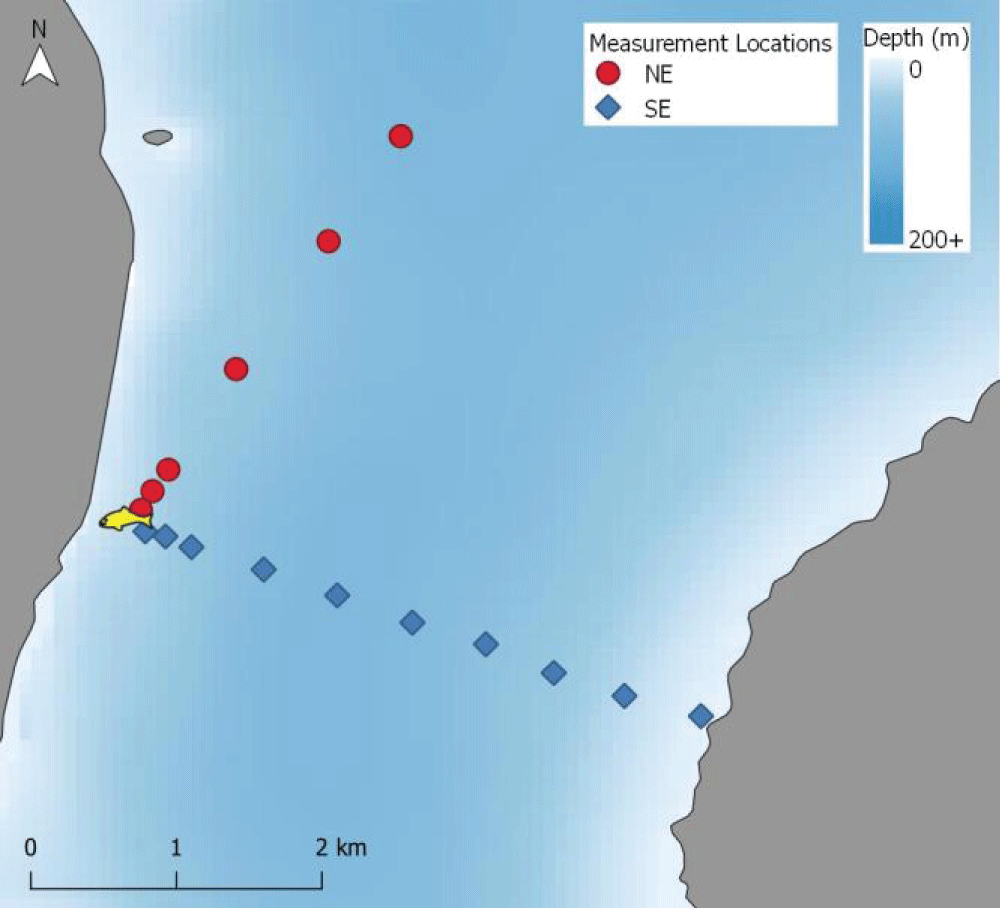
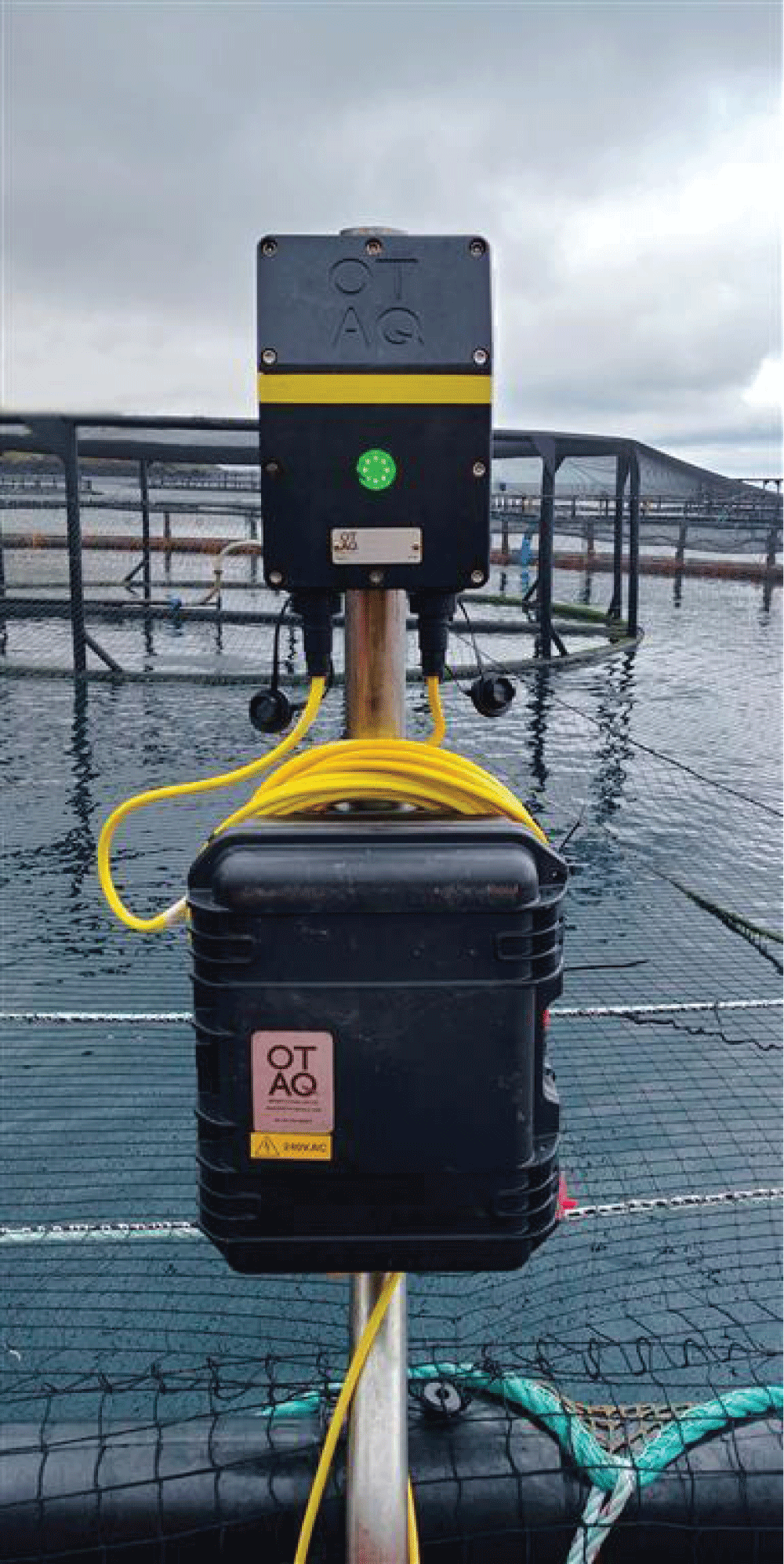
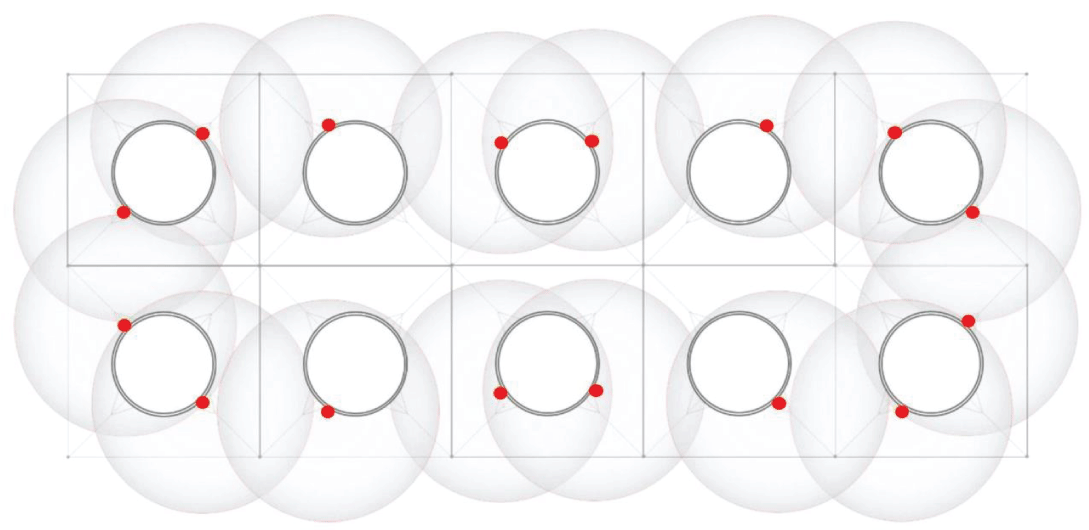
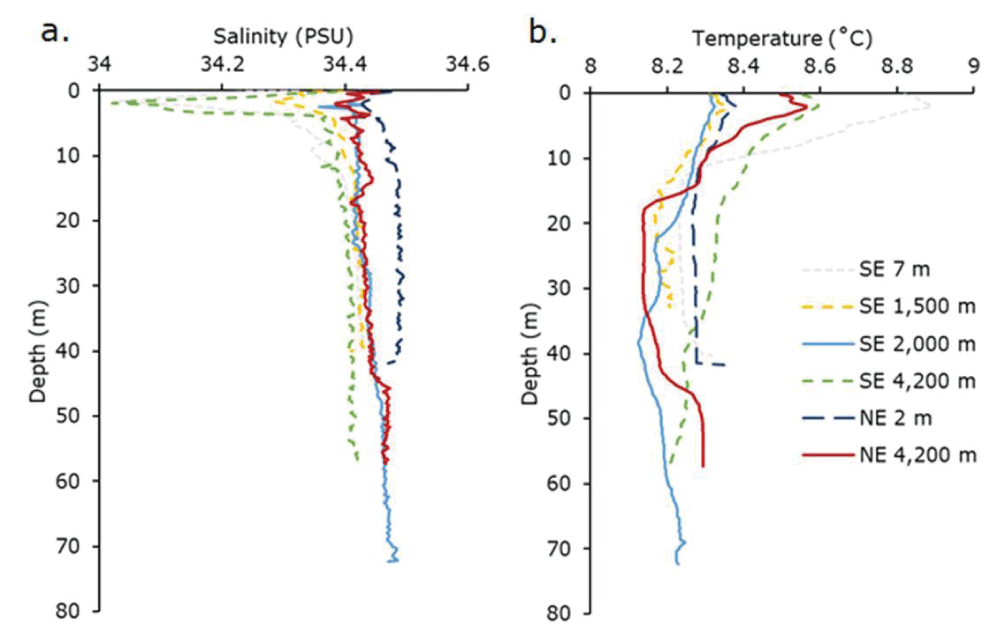
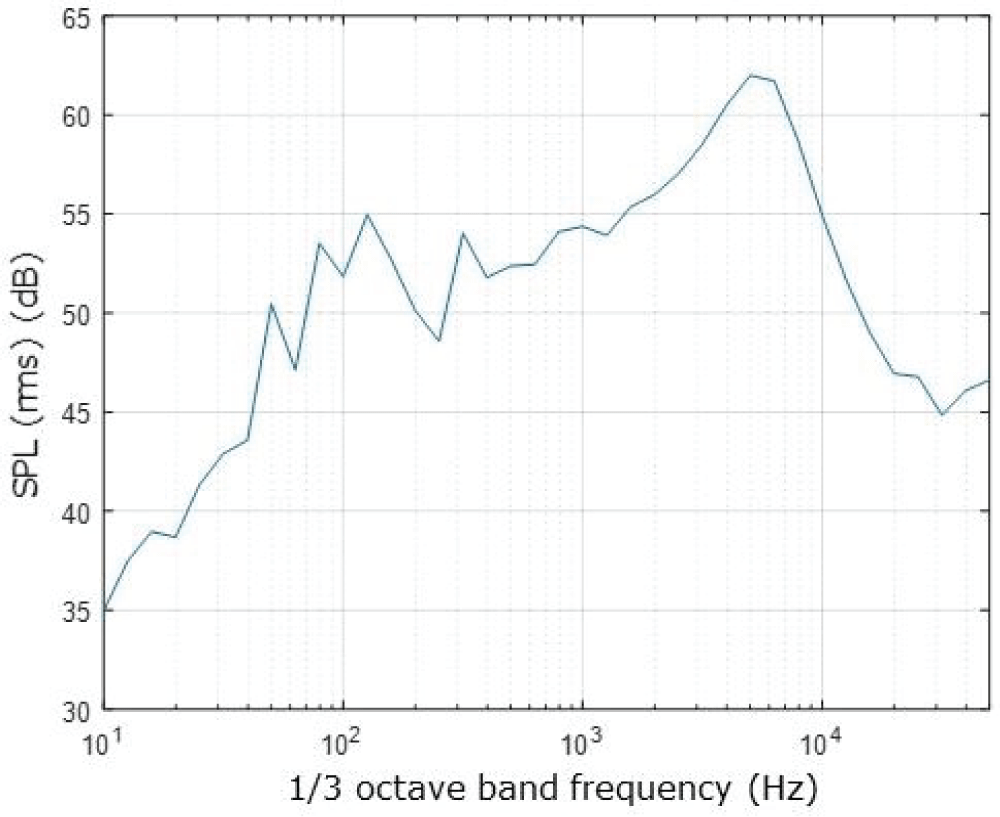
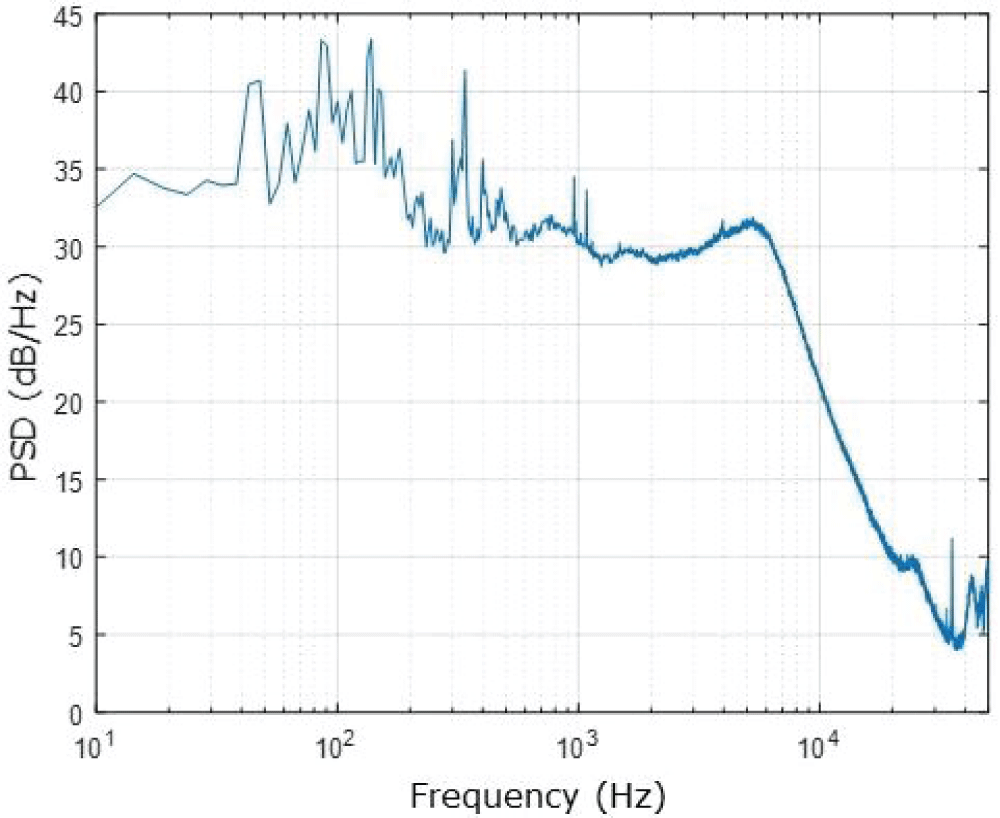

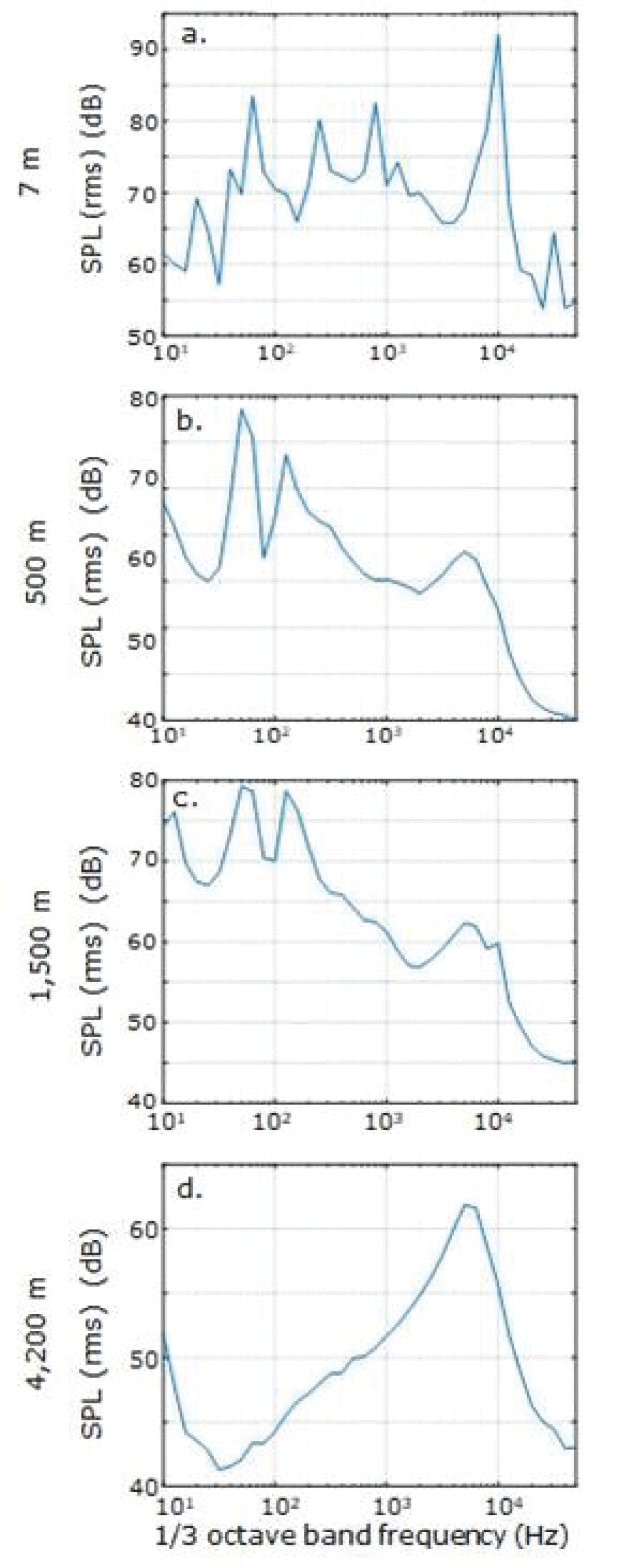
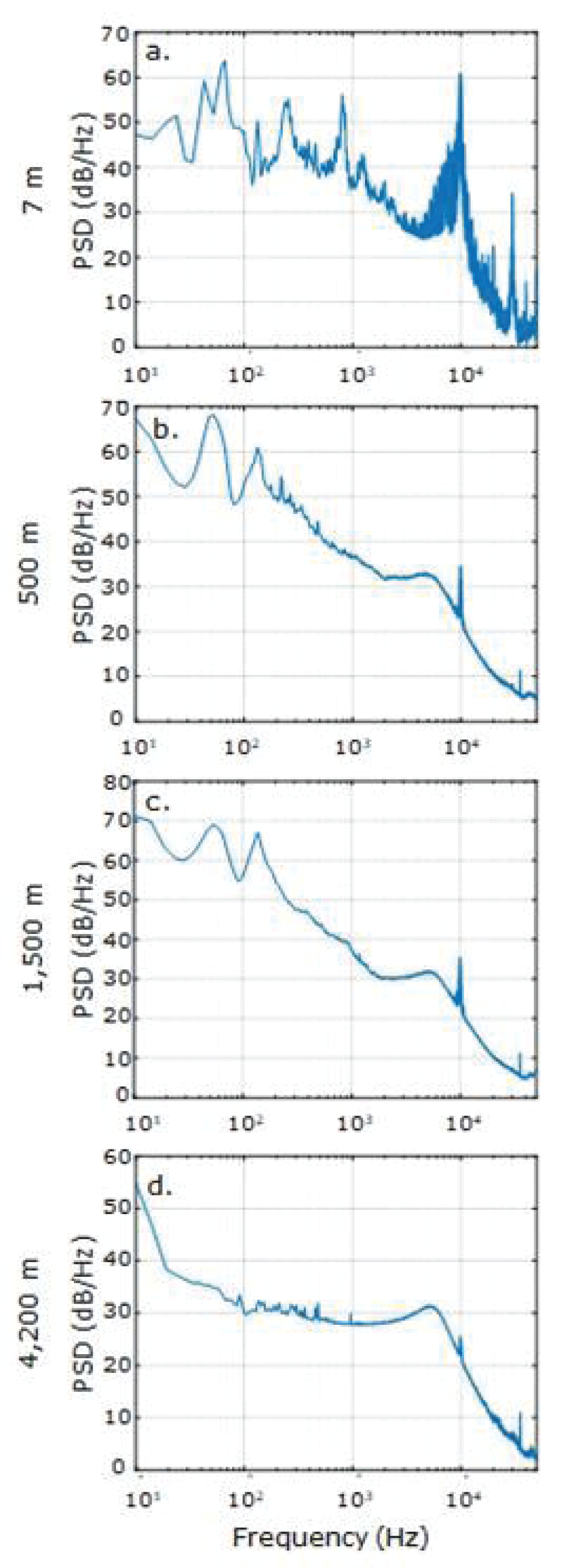
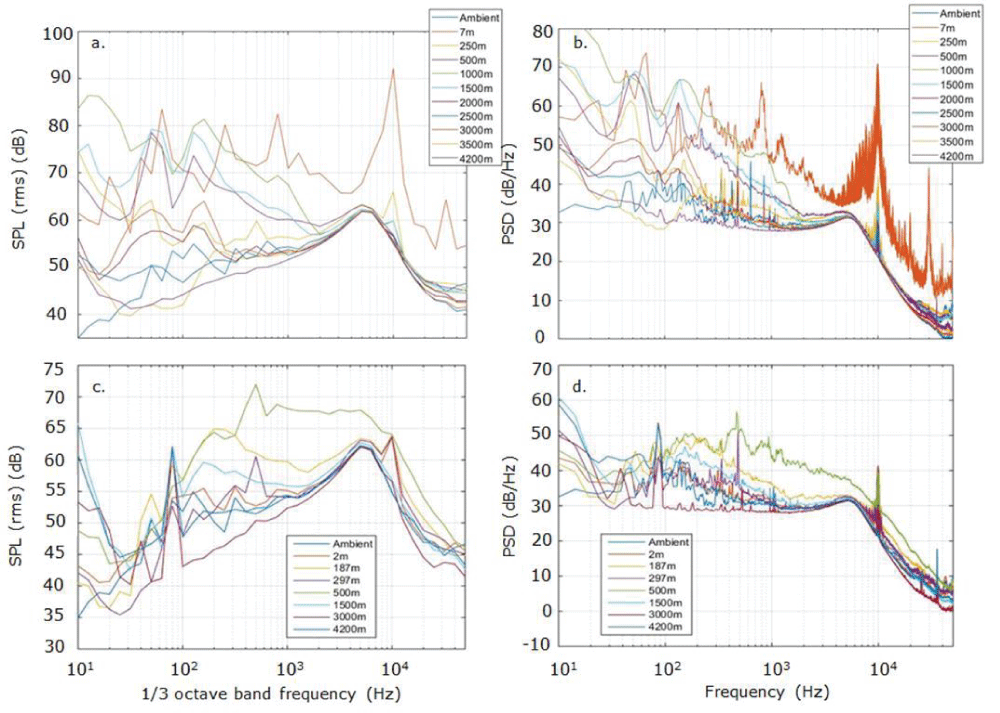
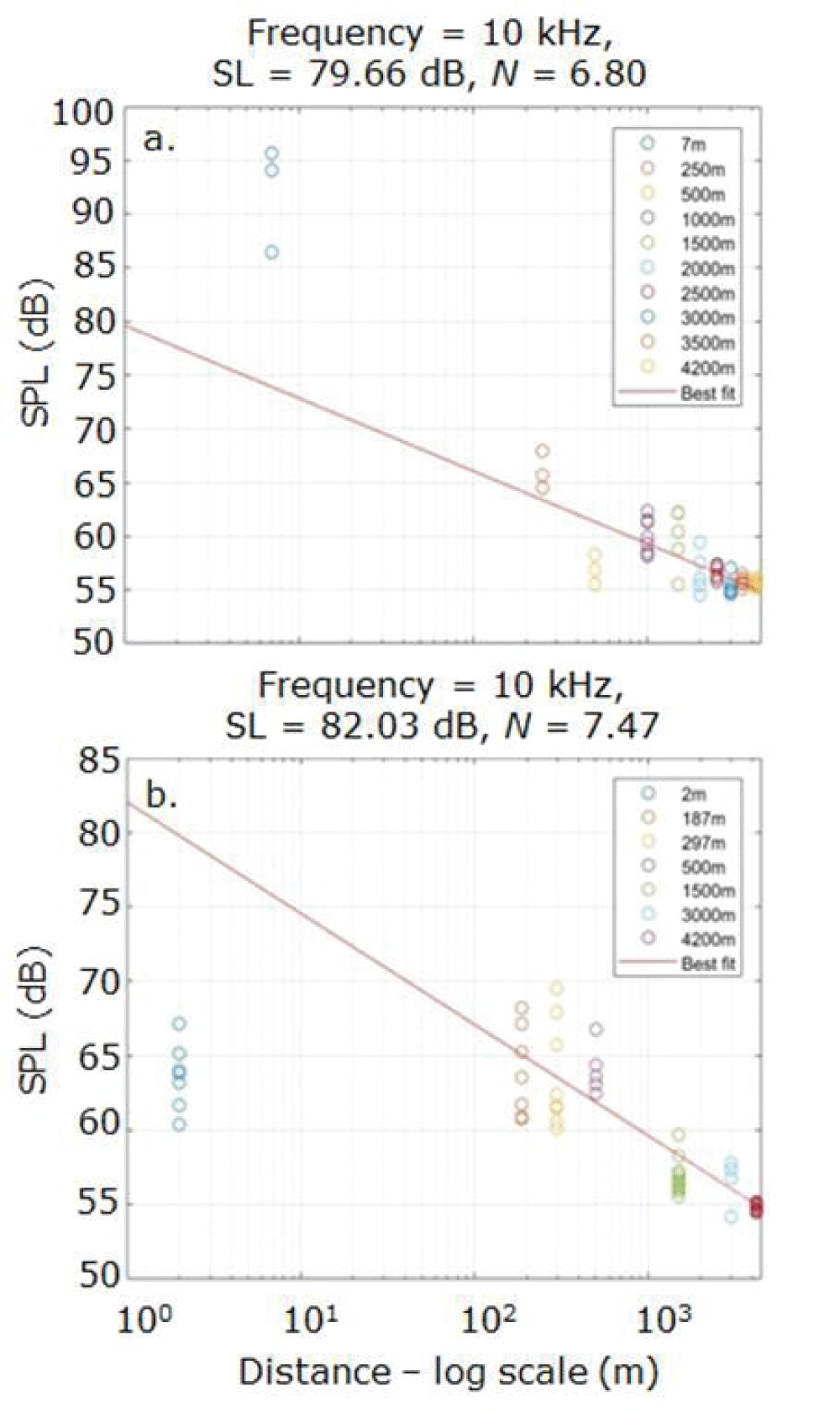
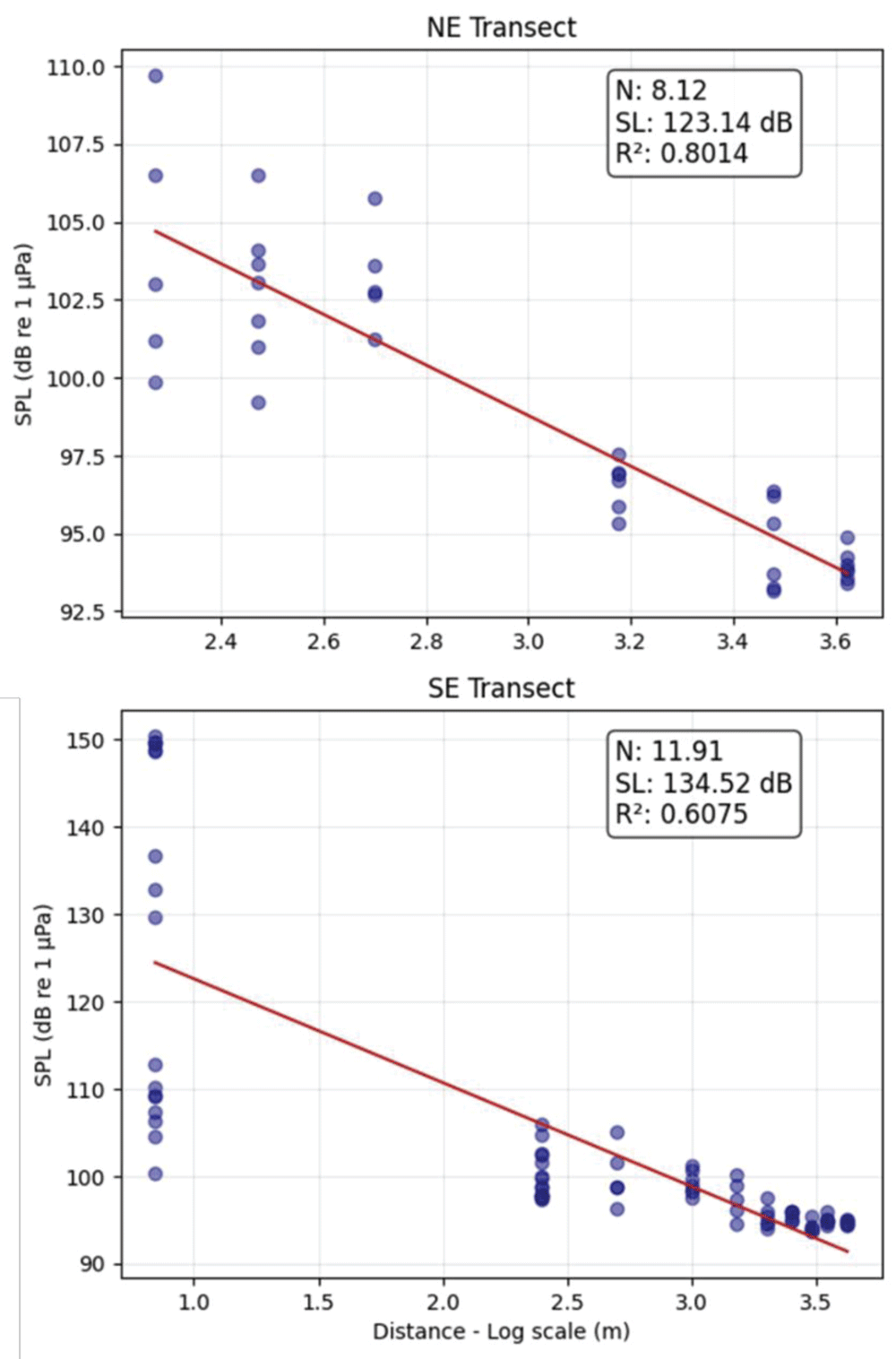

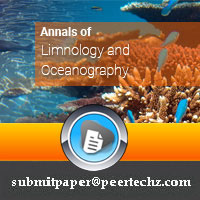
 Save to Mendeley
Save to Mendeley
